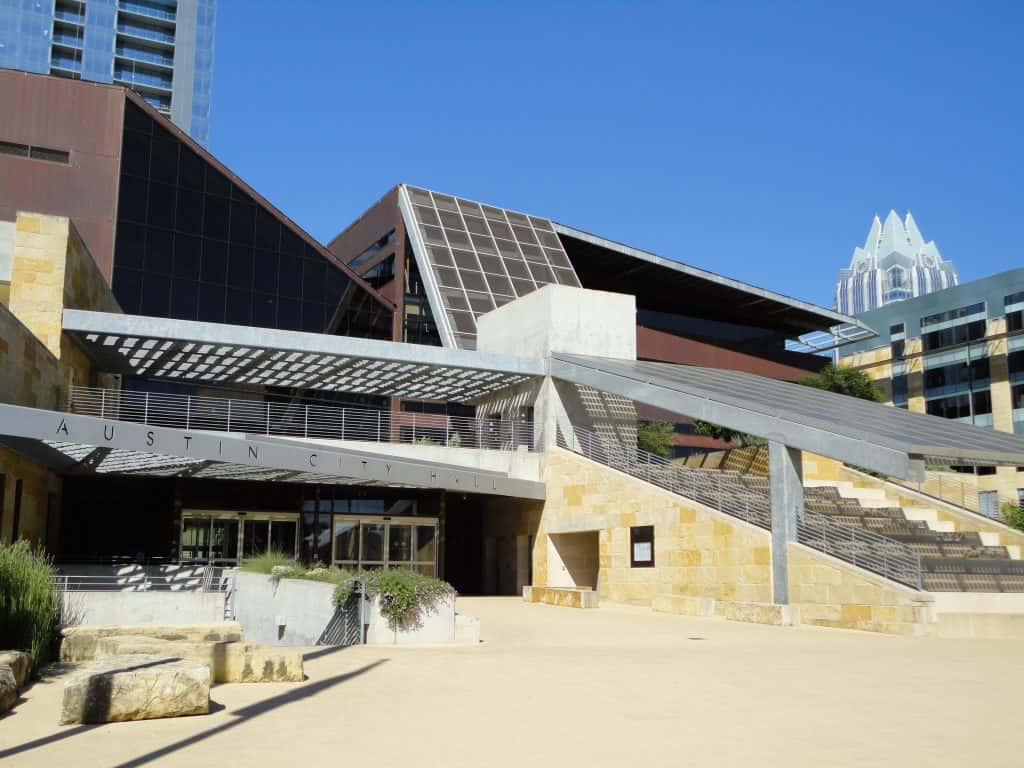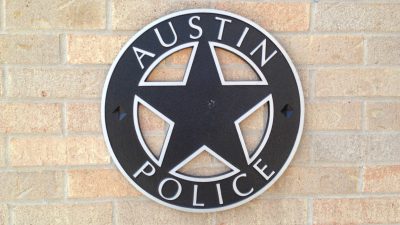(Credit: City of Austin)
Austin City Manager Spencer Cronk delivered his budget message on Monday and submitted a proposed Fiscal Year 2019 Budget to City Council.
At a special called meeting at the Mexican American Cultural Center, Cronk presented the highlights and key themes of his proposals for City tax and spending for the fiscal year beginning October 1, 2018.
This year, in a significant departure from the past, the budget has been organized by outcome – and not strictly by City department – to reflect the priorities of the Austin community, using Council’s newly adopted Strategic Direction 2023 as a guide. This was the culmination of several months of stakeholder engagement, including meetings in every Council district.
The City Council will take up discussions on the proposed budget beginning with a Work Session on August 15. Budget and Tax Rate public hearings are scheduled August 22 and 30, with final budget adoption in September 2018.
On the budget process…
“This is a transformational moment for our City. Over the past year, we’ve fundamentally reframed how we think and how we talk about the budget.When I took this job, one of the commitments I made was to make the budget process more focused, streamlined and consistent with your priorities as a Council and reflective of the priorities of our community. The goal was to make budget deliberations and adoption smoother and more predictable by integrating these priorities at the beginning of the process. These conversations need to be taking place year-round — not only in the month before we adopt a budget. I feel like we’ve made great progress in that respect, and the Strategic Direction has been the foundation of that effort.”
On public safety…
“Public safety is the largest component of our General Fund budget. This year, we’ve added funding for 33 new police officers. Twelve of those were added to the budget previously, but not funded. We’ve also increased the staffing for victim services. While this satisfies some of the immediate needs around community policing, it’s critical that we secure a labor agreement before we make decisions about future staffing levels and how they may impact the budget.”
On housing and homelessness…
“You’ll notice that the Strategic Housing Blueprint you adopted last year is a key driver for our investments in housing. That includes additional efforts to streamline the development review process and assist potential applicants in navigating incentive programs. This budget proposes to spend $40 million dollars by our Neighborhood Housing and Community Development department, and I’m proud to say that we are fully funding the Housing Trust Fund.
“When we talk about homelessness, much of our investment is building upon what we’ve learned from the Homelessness Outreach Street Team…This budget builds upon the $26m in on-going expenditures in service of individuals experiencing homelessness and invests another $3.1m to support our citywide response to this community.”
The Proposed Budget – highlights
- At $4.1 billion, the all-funds budget, which includes enterprise departments as well as the core services provided by the General Fund, is increasing $156 million, or 4.0{d9298e16fbff8ff2d9e84a8934eb00b21cf3ccd1154c522a6781c70a3ad80f68} from the prior year
- $1.0 billion General Fund budget, $53.9 million increase offset by Development Services Department transitioning to an enterprise operation; results in a net increase of $0.6 million from FY 2017-18
Funding highlights for projects and programs by outcome
- Economic Opportunity & Affordability: $472.3 million Operating Budget; $63.5 million Capital spending
- Fully fund the Housing Trust Fund via a total transfer of $5.3 million, a $3.1 million increase
- $3.1 million of new funding for homelessness programs, which builds on FY 2017-18 recurring expenditures of $26.3 million
- Completion of the Women and Children’s Shelter at a total project cost of $7.0 million
- $1.2 million to implement a new Chapter 380 policy
Safety: $965.9 million Operating Budget; $162.0 million Capital spending
- Initial $5.4 million in Capital Improvement Program spending on two new fire stations at Moore’s Crossing and Travis Country
- $1.7 million including 16 fire fighters and equipment for the new $9.8 million Onion Creek Station, bringing the total number of sworn fire personnel to 1,197 and the number of fire stations to 49
- $5.7 million for 33 police officers and equipment, bringing the total number of officers to 1,929
- $119,000 for 2 new victim services counselors, which brings total program staffing to 29 positions
Mobility: $238.0 million Operating Budget; $388.6 million Capital spending
- Projected spending of $67.7 million on the 2012 and 2016 Mobility Bond projects, including sidewalks, bike lanes, urban trails, and safety improvements, and Council adopted Corridor Construction Program
- $260.2 million in planned Aviation Capital Improvement Program spending for continued airport expansion
- $800,000 budgeted for the Vision Zero program
- $6.5 million Public Works operating budget increase for street preventive maintenance and sidewalk, ADA ramp, curb, and gutter improvements to address deteriorating infrastructure and improve accessibility
Culture & Lifelong Learning: $78.0 million Operating Budget; $9.3 million Capital spending
- $400,000 total for the Art Space Assistance Program to help displaced nonprofit arts groups
- $1.4 million Capital spending for building renovations and rehabilitation of Austin Studio’s space; $5.4 million estimated total project cost
- $11.2 million for Historic Preservation Fund, equating to maximum allowable 15{d9298e16fbff8ff2d9e84a8934eb00b21cf3ccd1154c522a6781c70a3ad80f68} of HOT funds
Health & Environment: $539.9 million Operating Budget; $111.1 million Capital spending
- $113.6 million Austin Public Health budget and 516 positions, including new funding for:
- $150,000 for immigrant legal services to Asian immigrants and other community members
- $500,000 for enhanced mental health and healthcare outreach services
- $500,000 for homelessness dedicated social service agreements
- $1.1 million for disease prevention, public health, and translation services
- $219,000 for senior access to health services and the Age-Friendly Austin Action plan
- $1.8 million in aquatic maintenance, bringing the total Aquatics activity budget to $10.7 million
- $611,000 increase and 5 positions for parks grounds, facilities, and playground maintenance
Government that Works: $779.6 million Operating Budget; $262.7 million Capital spending
- $8.0 million investment in a new Human Capital Management System
- Full funding for facility maintenance financial policy at $6.5 million, a $5.1 million increase
- $200,000 to conduct a Lesbian, Gay, Bisexual, Transgender, and Queer quality-of-life community study
Impact on Taxpayers
Property tax rate of 43.85 cents per $100 of taxable value, a decrease of 0.63 cents from FY 2017-18 tax rate; 4.9{d9298e16fbff8ff2d9e84a8934eb00b21cf3ccd1154c522a6781c70a3ad80f68} increase above the effective Operations and Maintenance rate, the second lowest since FY 2010-11
General homestead exemption increased from 8{d9298e16fbff8ff2d9e84a8934eb00b21cf3ccd1154c522a6781c70a3ad80f68} to 10{d9298e16fbff8ff2d9e84a8934eb00b21cf3ccd1154c522a6781c70a3ad80f68}; senior exemption maintained at $85,500
$1.27 monthly increase in the Transportation User Fee; All other enterprise base rates remain flat.





